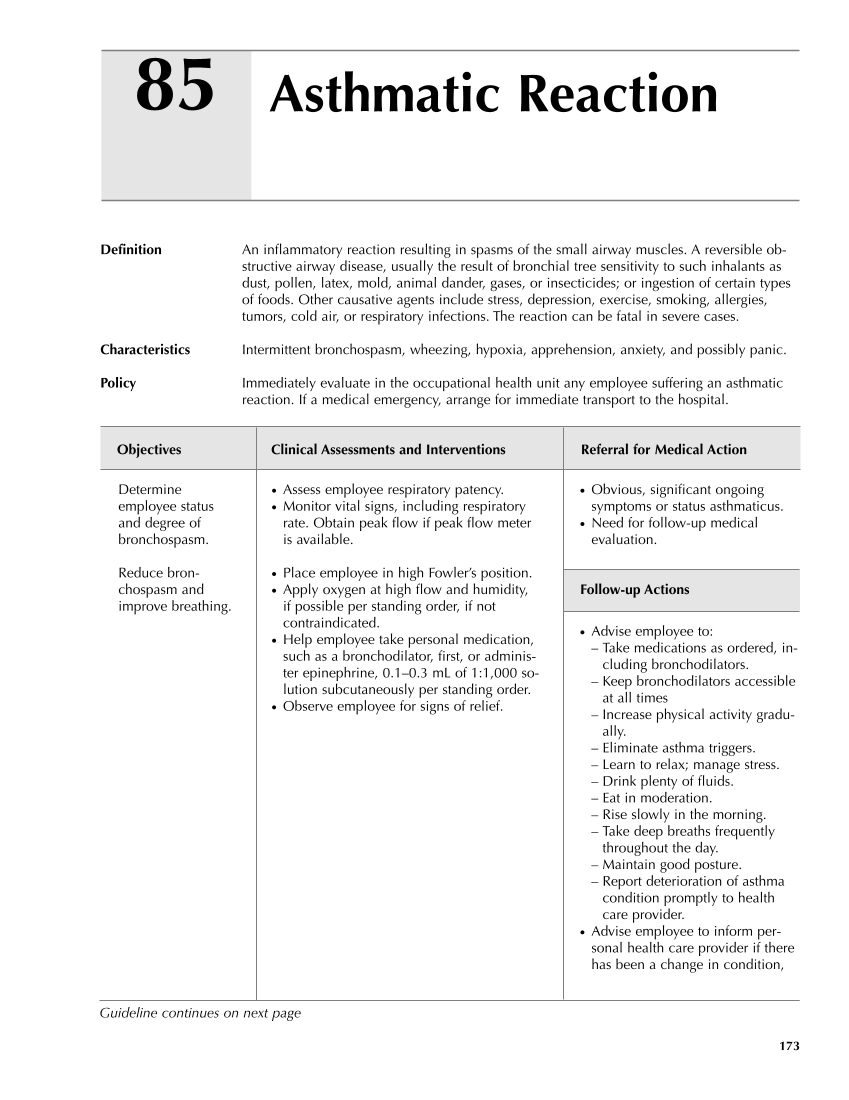173 Asthmatic Reaction 85 Definition An inflammatory reaction resulting in spasms of the small airway muscles. A reversible ob- structive airway disease, usually the result of bronchial tree sensitivity to such inhalants as dust, pollen, latex, mold, animal dander, gases, or insecticides or ingestion of certain types of foods. Other causative agents include stress, depression, exercise, smoking, allergies, tumors, cold air, or respiratory infections. The reaction can be fatal in severe cases. Characteristics Intermittent bronchospasm, wheezing, hypoxia, apprehension, anxiety, and possibly panic. Policy Immediately evaluate in the occupational health unit any employee suffering an asthmatic reaction. If a medical emergency, arrange for immediate transport to the hospital. Objectives Clinical Assessments and Interventions Referral for Medical Action ● Obvious, significant ongoing symptoms or status asthmaticus. ● Need for follow-up medical evaluation. Follow-up Actions ● Advise employee to: – Take medications as ordered, in- cluding bronchodilators. – Keep bronchodilators accessible at all times – Increase physical activity gradu- ally. – Eliminate asthma triggers. – Learn to relax manage stress. – Drink plenty of fluids. – Eat in moderation. – Rise slowly in the morning. – Take deep breaths frequently throughout the day. – Maintain good posture. – Report deterioration of asthma condition promptly to health care provider. ● Advise employee to inform per- sonal health care provider if there has been a change in condition, Determine employee status and degree of bronchospasm. Reduce bron- chospasm and improve breathing. ● Assess employee respiratory patency. ● Monitor vital signs, including respiratory rate. Obtain peak flow if peak flow meter is available. ● Place employee in high Fowler’s position. ● Apply oxygen at high flow and humidity, if possible per standing order, if not contraindicated. ● Help employee take personal medication, such as a bronchodilator, first, or adminis- ter epinephrine, 0.1–0.3 mL of 1:1,000 so- lution subcutaneously per standing order. ● Observe employee for signs of relief. Guideline continues on next page Guideline continues on next page
Purchased from OEM Press by (ge corporate access). (C) 2013 OEM Health Information, Inc. All rights reserved.












































































































































































































































































































































































































































